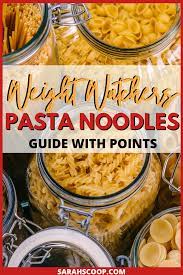Pasta Recipe by Weight: Discover the Perfect Measurements for Delightful Dishes
When it comes to cooking pasta, precise measurements are crucial for achieving the perfect texture and flavor. Gone are the days of estimating pasta quantities by handfuls or eye-balling ingredients. In this article, we will explore the concept of pasta recipes by weight, providing you with a comprehensive guide to cooking pasta using accurate measurements. Whether you're a novice in the kitchen or an experienced cook, this guide will help you create delicious pasta dishes with ease.
1. Importance of Accurate Measurements:

Importance of Accurate Measurements
In the culinary world, accuracy is key. By using weight instead of volume measurements, you can ensure consistent results every time you cook pasta. Weight measurements eliminate discrepancies caused by variations in ingredient density and packing. By following precise measurements, you can achieve perfectly cooked pasta with the ideal sauce-to-pasta ratio.
2. Basic Pasta Weight Guidelines:

Basic Pasta Weight Guidelines
To start your pasta journey, it's important to understand the basic weight guidelines for various pasta types. These measurements are approximate and can vary slightly depending on personal preference. Here's a table to help you get started:
| Pasta Type | Weight per Serving |
| Spaghetti | 100 grams |
| Penne | 125 grams |
| Fusilli | 110 grams |
| Linguine | 115 grams |
| Farfalle | 90 grams |
| Rigatoni | 120 grams |
| Macaroni | 100 grams |
3. Adjusting the Quantities:
Now that you have a general idea of pasta weights, you can adjust the quantities based on the number of servings you need. Here's a simple formula to calculate the amount of pasta required:
Total Pasta Weight = Number of Servings × Weight per Serving
For example, if you're serving four people and using linguine, the calculation would be: Total Pasta Weight = 4 × 115 grams = 460 grams
4. Perfecting the Sauce-to-Pasta Ratio:
While pasta quantity is essential, achieving the perfect sauce-to-pasta ratio is equally important. A well-coated pasta dish ensures each bite is flavorful and delicious. Here's a handy guide to help you determine the ideal sauce-to-pasta ratio based on the weight of the cooked pasta:
| Pasta Weight (Cooked) | Sauce Amount |
| 100 grams | 120-150 ml |
| 125 grams | 150-180 ml |
| 150 grams | 180-210 ml |
| 175 grams | 210-240 ml |
| 200 grams | 240-270 ml |
5. Tips for Cooking Pasta:
To further enhance your pasta cooking skills, here are some valuable tips to keep in mind:
a. Use a large pot: A spacious pot allows the pasta to cook evenly without sticking together.
b. Boil water with salt: Season the cooking water with salt to enhance the pasta's flavor.
c. Cook pasta al dente: Follow the recommended cooking time and frequently check for doneness to achieve a perfect al dente texture.
d. Reserve pasta water: Before draining the cooked pasta, save a cup of the starchy pasta water. It can be used to adjust the consistency of your sauce.
e. Toss pasta with sauce: Once cooked, drain the pasta and toss it immediately with the sauce to ensure even coating.
Cooking pasta by weight is a reliable method to achieve consistent results and perfectly balanced dishes. By using accurate measurements, adjusting quantities, and maintaining the ideal sauce-to-pasta ratio, you can create delightful pasta recipes every time. Remember to follow the provided guidelines, experiment with flavors, and enjoy the process of creating delicious pasta dishes. Happy cooking!